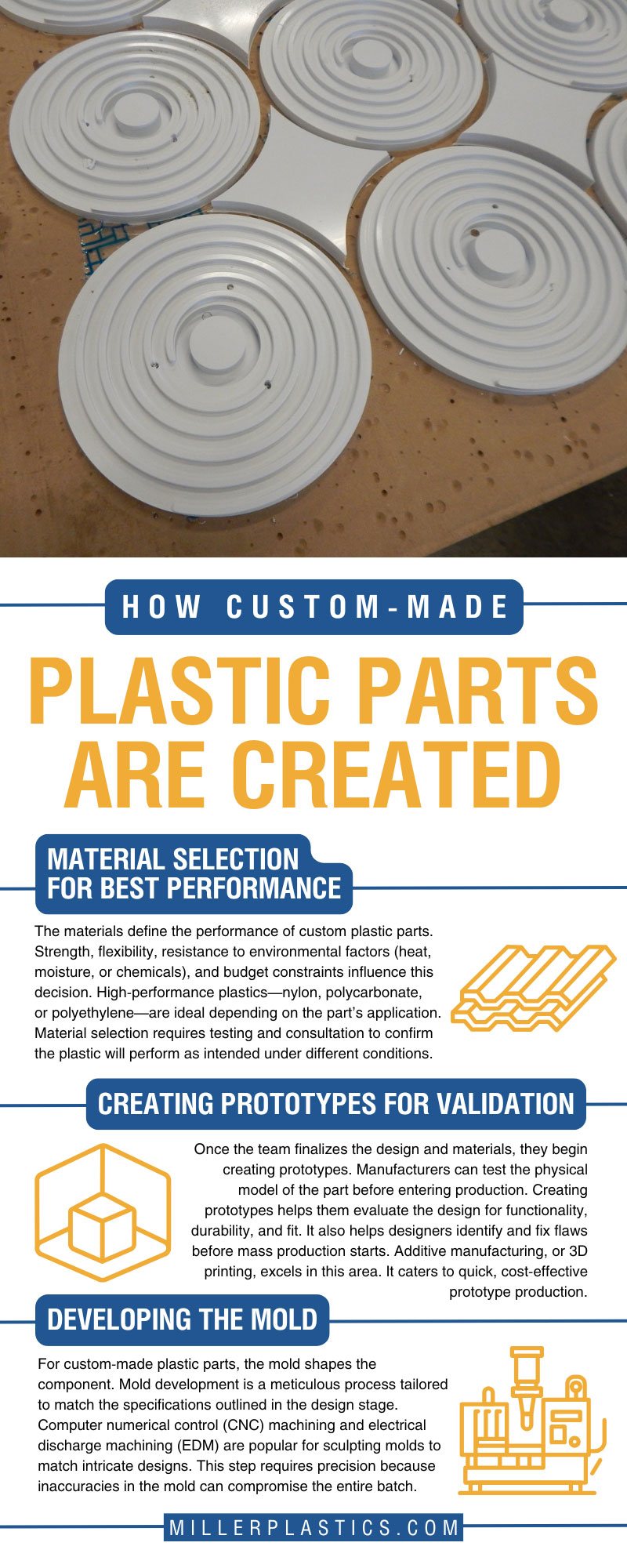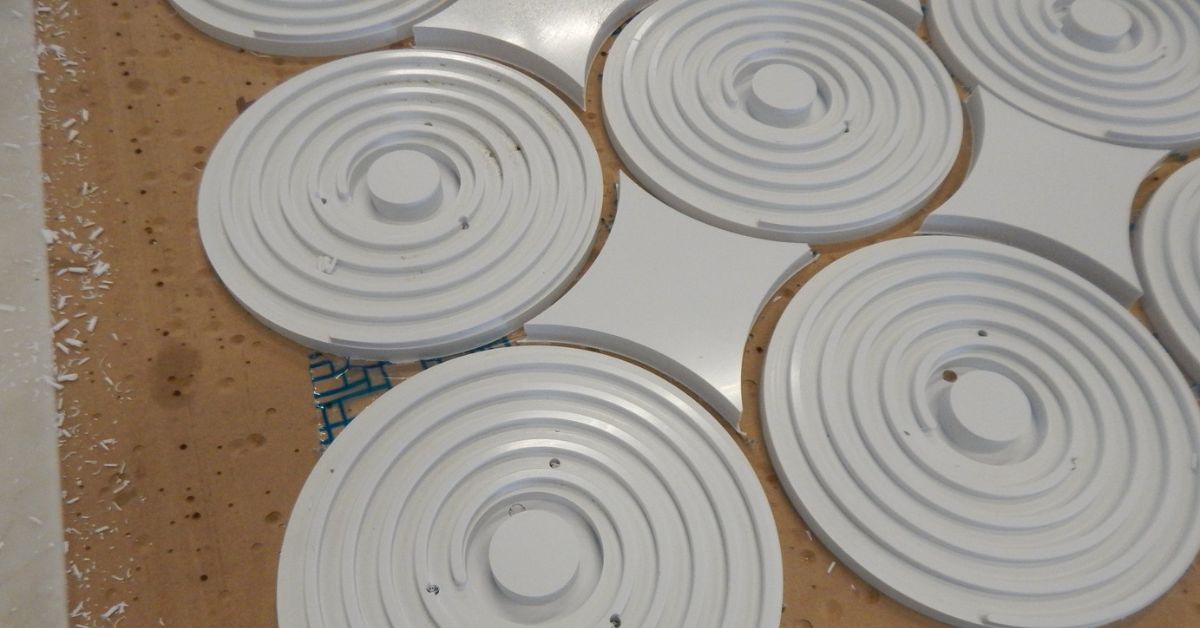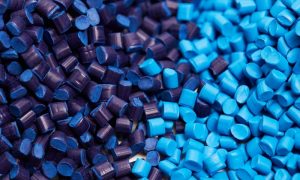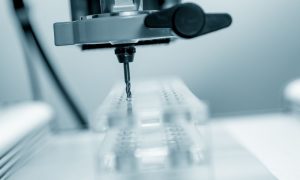Custom-made plastic parts are popular due to their flexibility, durability, and precision. How do these intricate components go from a concept to a tangible product? The creation process balances engineering techniques and skilled workers to meet specifications and performance standards.
Custom plastic part manufacturing starts with an idea and finishes with components that are ready for practical use. By breaking down how custom-made plastic parts are created, we can appreciate the level of expertise that goes into this technical process.
Designing the Concept of the Plastic Part
Every custom plastic part begins with a concept. During the design process, engineers and designers collaborate to craft a blueprint based on the client’s requirements. This stage involves careful consideration of the part’s intended purpose, size, functionality, environmental conditions, and longevity. Using computer-aided design (CAD) software, specialists create 3D models of the part to visualize and refine the idea before manufacturing.
Material Selection for Best Performance
The materials define the performance of custom plastic parts. Strength, flexibility, resistance to environmental factors (heat, moisture, or chemicals), and budget constraints influence this decision. High-performance plastics—nylon, polycarbonate, or polyethylene—are ideal depending on the part’s application. Material selection requires testing and consultation to confirm the plastic will perform as intended under different conditions.
For example, polycarbonate is great for headlight lenses in the automotive industry due to its high impact resistance, optical clarity, and ability to withstand UV exposure and temperature fluctuations.
Creating Prototypes for Validation
Once the team finalizes the design and materials, they begin creating prototypes. Manufacturers can test the physical model of the part before entering production. Creating prototypes helps them evaluate the design for functionality, durability, and fit. It also helps designers identify and fix flaws before mass production starts. Additive manufacturing, or 3D printing, excels in this area. It caters to quick, cost-effective prototype production.
In the automotive industry, a company designing a new engine component may use 3D printing to create a prototype of the part. They can test this prototype for tolerances, compatibility with other elements, and performance under simulated operating conditions. By identifying potential issues in this phase, manufacturers can make necessary adjustments to the design before advancing to full-scale production.
Developing the Mold
For custom-made plastic parts, the mold shapes the component. Mold development is a meticulous process tailored to match the specifications outlined in the design stage. Computer numerical control (CNC) machining and electrical discharge machining (EDM) are popular for sculpting molds to match intricate designs. This step requires precision because inaccuracies in the mold can compromise the entire batch.
Injection Molding and Production
Manufacturers begin the production process once they prepare the mold, often using injection molding. Plastic pellets are melted into a liquid state and injected into the prepared mold under high pressure. After the part cools and hardens, the operator removes it from the mold. Injection molding is efficient, allowing manufacturers to produce large quantities of identical plastic parts with minimal waste in a relatively short time. The ability of this process to deliver precise and intricate parts makes it an industry favorite.
Quality Testing After Production
Quality assurance is paramount in the manufacturing of custom plastic parts. Each component undergoes rigorous testing to meet specified tolerances, dimensions, and mechanical properties. Manufacturers use coordinate measuring machines (CMMs) and optical scanners to verify dimensional accuracy, while stress tests help them analyze the part’s durability under various conditions.
In the automotive industry, a plastic gear in a transmission system might undergo thermal cycling and load testing to ensure it can withstand temperature changes and mechanical stress without cracking or deforming. Comprehensive testing helps manufacturers deliver reliable and safe products.
Surface Finishing and Detailing
Once quality testing confirms that the parts meet all standards, manufacturers may apply finishing touches to get the part’s surface quality and appearance up to par. Trimming, deburring, polishing, or coating can refine the part, enhance its visual appeal, and guarantee it functions seamlessly in its intended application.
In medical device manufacturing, a plastic casing for a handheld diagnostic tool may undergo ultrasonic polishing to achieve a smooth, hygienic finish that’s easy to clean and comfortable for patients and technicians to handle. Finishing also improves safety by removing sharp edges and boosts compatibility with other components by meeting tight tolerances.
Delivering the Finished Product
After surface finishing, the parts are ready to go to the client. At this stage, manufacturers may provide additional services, such as assembly or customized packaging, to ensure the parts remain intact during shipping. The delivery marks the culmination of weeks or months of detailed design, precision manufacturing, and thorough testing.
The Role of Advanced Technologies
Technological advancements continue to shape the manufacturing process of custom plastic parts. AI-driven modeling, advanced 3D printing, and automated quality testing streamline operations, reduce errors, and enhance the precision of each step. These technologies also allow faster project timelines so that clients receive their components as soon as possible.
Applications Across Industries
Custom-made plastic parts are created for the automotive, aerospace, healthcare, and electronics industries. For instance, these parts provide lightweight solutions in automotive manufacturing for better fuel efficiency. Similarly, plastic’s biocompatibility and sterilization capabilities make it ideal for medical devices. These applications demonstrate how versatile and essential custom plastic parts are in today’s world.
The Benefits of Custom Plastic Parts
Custom-made plastic parts offer several advantages. Business leaders can create components that outperform generic alternatives by altering the design, material, and production methods. Their lightweight nature and resistance to corrosion and chemicals set them apart. Additionally, customization eliminates the need for multiple adjustments, speeding up integration into final assemblies.
A Sustainable Approach to Plastic Manufacturing
Sustainability is a priority in any manufacturing process, and the production of custom plastic parts is no exception. Many manufacturers incorporate recycled plastics into their processes or explore biodegradable materials to minimize environmental impact. Additionally, reducing material waste during injection molding and reusing scrap plastic are two ways manufacturers uphold ecological responsibility while maintaining quality.
Custom plastic parts are the backbone of many industries, combining intricate designs, innovative technologies, and quality assurance. By opting for these tailored solutions, business leaders can enjoy superior performance, reliability, and sustainability while meeting their operational requirements. Partner with Miller Plastic Products to ensure your custom plastic parts receive expert-level finishing and detailing that meet your industry’s standards.





